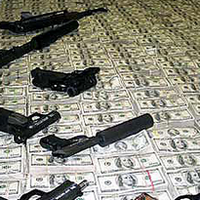In January 2009, retired Gen. Mauro Tello Quiñones took command of a police unit charged with combating drug-related violence in the popular Mexican tourist destination of Cancún. The assignment lasted just one week. In early February, Tello and two aides were kidnapped and killed. Before murdering Tello, the assailants broke his arms and legs and tortured him for hours. The incident provoked shock across Mexico, with the governor of Quintana Roo state calling it "truly horrible." Even by the standards of the violent drug war that has consumed Mexico of late, this crime stood out for its brazenness and brutality. In short, it bore all the marks of an attack by the notorious paramilitary organization known as Los Zetas.
Originally composed of 31 army deserters who went to work for a cartel boss, the Zetas have evolved over the past decade into a sophisticated criminal enterprise with more than 1,000 members. Drawing on military-style skills and a penchant for the gruesome, the group has expanded its illegal activities and established itself as the most feared and destructive player in the Mexican drug trade. The Zetas have ruthlessly seized market share, waged a bloody campaign against the authorities, and used coercion and bribery to hollow out government institutions from within. Their exploits have spurred the militarization of the Mexican drug trade. In short, they have done more than any other entity to foster the cycle of violent chaos in which the country is currently trapped. Having begun as hired guns, the Zetas now represent the single greatest threat to the Mexican state.
The Zetas were founded in 1997 amid the dramatic intensification of the Mexican drug trade. During the 1990s, drug trafficking in Mexico became a more lucrative -- and also a deadlier -- profession: more lucrative because U.S. interdiction programs in the Caribbean made Mexico the primary entry point for cocaine and heroin consumed in the United States; deadlier because the rules that once governed the business broke down. For decades, the Institutional Revolutionary Party (PRI) had overseen a system in which drug kingpins paid bribes and kept violence to a minimum. In return, the PRI protected the cartels and allocated access to the plazas, or drug-running corridors into the United States. As the PRI lost power during the 1990s, this system came apart, and comparative stability gave way to a Hobbesian struggle for the plazas.

